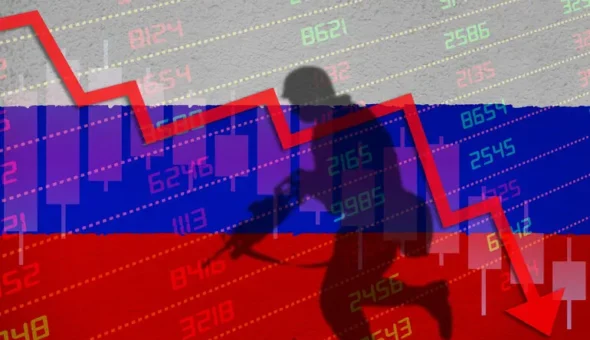
Frog concerts are held along the shores of Odesa. It’s a strange thing. After all, our frogs are freshwater creatures; they do not live in the Black Sea. These animals were brought along with the garbage by a powerful stream of Dnieper water, which was formed due to an artificial catastrophic flood. They did not have long to sing. As soon as the fresh water brought from the Kakhovka Reservoir mixes with the Black Sea water and the salinity is restored, the animals will die. But the purely brackish water inhabitants, who are now in trouble, will be able to return to these areas.
On June 6, 2023, the russian explosion of the Kakhovka hydroelectric dam not only resulted in many deaths and economic losses, but also caused enormous damage to the environment. Although nature, as the experience of, say, the Chernobyl zone shows, has a fantastic potential, restoration will not take place in all areas, not all natural complexes, and not immediately.
From edge to edge
According to scientists at the World Data Center for Geoinformatics and Sustainable Development (WDC), which operates on the basis of the Igor Sikorsky Kyiv Polytechnic Institute, the flooding occurred under one of three scenarios that WDC-Ukraine predicted back in October 2022. This means that at the peak of the flooding, the total area covered by water (including the Dnieper riverbed and mouth) reached more than 1100 km2. The minimum width of the flooded area is 2.3 km near the hydroelectric power plant itself, and the maximum is 23 km near the river mouth. The width of the maximum non-continuous flood zone (with elements of non-flooded areas in the middle of the zone) reaches 38 km. At the same time, the coast of the right bank of the Dnieper is 8 times less flooded than the left bank.
It is a huge water mirror that cannot be crossed by land animals, no matter how strong they are. Only those who can find some higher ground or are close to the shores of this temporary sea will be saved.
To complete the picture, it should be understood that the tragedy is unfolding in the lower reaches of the Dnieper, the fourth longest (after the Volga, Danube, and Ural) and third largest river basin in Europe (after the Volga and Danube). That is, there is already a lot of water here. It would seem that nature must have some adaptive mechanisms to deal with rising waters. Indeed, for the Dnieper floodplain, as well as for any river, flooding is not something out of the ordinary. The nature of the delta and the river floodplain is adapted to rising water. This time, however, the water rose very quickly and very high, and it occurred in early summer rather than spring. This, in particular, was very bad for birds.
According to the Ukrainian Nature Conservation Group (UNCG), the largest bird colonies in the region (herons, mallards, terns, ducks, mergansers, shepherds, mute and water hens, and mute swans) are concentrated in the flooded area in the floodplains of the lower Dnieper. The nests are gone, and the chicks are dead. For the second time this summer, these birds will not have time to raise chicks.
The good news is that according to the forecasts of ornithologists from the UHU, the birds will be able to restore their numbers in 3-7 years. More time (5-10 years) will be needed to restore the number of predators, such as harriers.
The restoration of bird colonies will be supported by strict adherence to the protection regime in the protected areas, of which there are already many, and by fulfilling the requirements of the law on the season of silence. It is clear that while the war is on and the russian aggressors are still on the territory of our homeland, it is important to keep silent. But as soon as the enemy is driven out, I hope that Part 5 of Article 39 of the Law of Ukraine “On the Animal World,”, which provides for the introduction of a silence season during the breeding season of wild animals from April 1 to June 15, will work properly. According to this article, it is prohibited to:
- carrying out works and activities that are a source of increased noise and disturbance (including shooting, blasting, fireworks, concerts, festivals, and the use of motorized small vessels (except for their use in the course of control in the field of protection, use and reproduction of flora and fauna, and elimination of the consequences of emergencies);
- implementation of all types of logging of the main use and all types of logging for forest formation and rehabilitation in all forest areas belonging to the reproduction areas in accordance with the arrangement of hunting grounds, highland forests, valley floor forests, forests in ravines, gullies, and river valleys, forest areas on the slopes of ravines, gullies, cliffs, landslides, coastal protection areas, forest areas around river sources, along the border with treeless areas, forests in wet and damp forest vegetation types, within the territories of the nature reserve fund;
- reclamation fishing of bioresources, research, development, scientific, and industrial fishing with the involvement of the technical base of industrial fishing enterprises, rallies, and other competitions in vehicles.
When zoologists are desperate
After the russian terrorist attack, of the more than a thousand square kilometers of continuous water surface that formed about a quarter of it was land before the dam was blown up. According to the Ukrainian Hydrometeorological Institute’s calculations based on satellite images, as of June 11, 309 square kilometers were flooded in the Kherson region. This is three times the area of Paris. Or slightly less than the area of Venice. But unlike the Italian “paradise on the water,” the flooded lands of Kherson region are mostly steppes or semi-deserts that have never been flooded. Steppe animals and plants are not adapted to flooding, and many of them will die. And those hedgehogs, hares, snakes, and lizards that get in the way of a powerful shaft of water will simply be washed away into the sea. When the water subsides, huge areas will be formed where there will be no animals at all.
But over time, these areas will begin to be populated again, with animals migrating here from neighboring, non-flooded areas. Just as an old campfire is gradually overgrown with greenery, so these areas will gradually come to life.
According to Ph.D. candidate Mykhailo Rusin, the flooding poses a risk of extinction for many Red Book animals. In particular, the populations of the steppe mouse and Friedrich von Falz-Fein’s emuranchik (Latin: Stylodipus teluma; small rodent from the jerboa family) may disappear by 70% and the sand dabbler (Latin: Spalax arenarius) by half. These cute little animals simply won’t have time to migrate, and they would hardly be able to find another suitable area for their lives in the steppe that has been plowed up almost completely.
We can look at it from the other side and say that there are chances that, despite the flooding, a third of the population of this emuranchik and half of the populations of the other two animals will survive. But whether these remnants will be enough to save the species, only Mr. Rusin and other experts will say after more thorough research. As for the measures to save these animals and other rare species, often the best way to help them is to protect the places where they live from human impact. That is, to create protected areas where they have not yet been created and to maintain the strictest possible protection regime in the existing ones.
By the way, here is a list prepared by the UHNR of promising nature reserve sites that will suffer as a result of the destruction of the Kakhovka hydroelectric dam and which will need to be created after further examination. Let me remind you that national parks and reserves of national importance are created by presidential decrees, while local ones are created by a decision of the regional council. So, after the victory, we are waiting for the decision to create such protected areas:
- Kurgan Valley National Nature Park;
- Landscape reserves of national importance: Burgunska Balka, Vyazemsky, Donchykha, Zabaryne, Korovodynskii, Tyaginska Balka;
- Botanical reserve of national importance “Kardashynske Bog”;
- Landscape reserve of local significance “Forest Canyon”;
- Botanical reserves of local importance “Alder Sagas” and “Orlovskyi”;
- Geological natural monument of local importance “Outcrops of Miocene sediments near the village of Lviv”;
- Complex natural monument of local importance “Baidy-Bombandery” and a dozen other natural monuments.
There was a forest
According to the head of the State Enterprise “Forests of Ukraine” Yurii Bolokhovets, approximately 55 thousand hectares of forests in the Kherson region are flooded with water due to the explosion of the Kakhovka hydroelectric power plant, including 47 thousand hectares in the occupied territories.
The left bank of the Dnipro in the Kherson region is planted with pine forests. The fertile soil and young plantations were most likely swept away by the water. “Pine grows well where it is dry. In flooded areas, stagnant water provokes the development of root rot and changes the acidity of the soil. This threatens to kill the trees if the water stays for up to 20 days, as predicted. Trees under the age of 10 are particularly at risk,” reminds the chief forester of Ukraine.
I would like to add that forests do not grow well in these parts. Because this is a steppe zone. Discussions about the dangers of creating a pine monoculture and the feasibility of reforestation in the Kherson region are ongoing. It is difficult and expensive to grow a forest here; seedlings die, and mature forests burn. At the end of April last year, in the occupied part of the Kherson region, the fire engulfed more than 800 hectares of forest. According to Yurii Bolokhovets, who was then the head of the State Agency of Forest Resources of Ukraine, the russian military prevented the fire from being extinguished; they did not allow the forest guard to enter the site until the fire reached their own checkpoints.
Therefore, after the victory and the survey of flood and fire damage, a special commission should be set up under the auspices of the Ministry of Environment with the participation of academic and university scientists and the public. It should determine where forests should be restored and where, as environmentalists have long suggested, the steppe should be restored. There are also areas where forests were planted to stop the movement of sand. Here, too, we need to ask scientists about the best way to fix shifting sands, and not just automatically try to “do as it was.”
What’s up there?
The area of the Kyiv reservoir mirror is over 2000 square kilometers. When the Dnieper returns to its main channel, about half of this area will be exposed. When such a huge reservoir disappears, it leads to an environmental disaster. Nature is very flexible; it can adapt very well, but it needs time, and when there are sudden changes, it is a disaster. A huge number of fish, mollusks, crayfish and other aquatic organisms will die if such a drastic change occurs.
It will take a long time for the drained areas to somehow resemble the flowering shores that were here before the flooding in the 1950s, when the Kakhovka hydroelectric power station was built and a man-made sea was created. The consequences of the terrorist attack for the part of the territory that lies above the dam should be written about separately.
But it is important that the plans to restore the dam and the feasibility of such restoration in general be discussed with the involvement of experts from the Institute of Environmental Economics and Sustainable Development of the National Academy of Sciences of Ukraine, the Institute of Hydrobiology, the Kholodny Institute of Botany, the Schmalhausen Institute of Zoology, other institutions of the National Academy of Sciences, university science, and the general public. Because new construction and new flooding of the territory will mean another environmental disaster.



